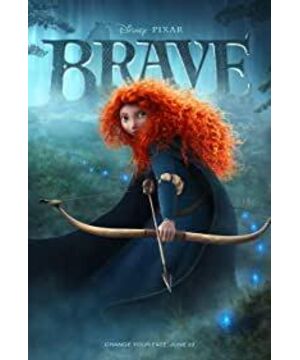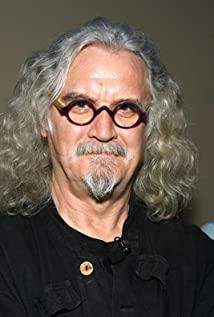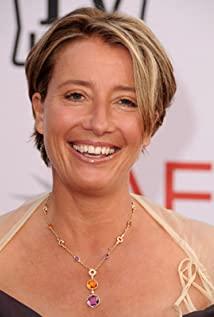"Female perspective" is no longer a new term. Many film and television works advertise themselves as feminine and feminine, but under the beautiful skin, there are still stale, conservative concepts of hierarchy, discrimination, and arrogance. The "female perspective" corresponds to the traditional "male perspective" of black and white, hierarchies, contradictions, and both righteous and evil. According to my own understanding, it should be relatively equal and mutually understandable, and the world is not so dual and distinct. Perspective can also be said to be a blind spot for viewing and understanding the world from a male perspective. The "female perspective" is not the exclusive perspective of women, it is not the perspective of female directors, screenwriters, or authors, nor the perspective of female characters, and it is not the perspective that all women dominate (director, screenwriter, original author, main role).
Take a chestnut: Both Dibao’s princess movies "Mermaid" and "Beauty and the Beast" in the 1990s are both love adventures of young women, but they look at love from two completely different perspectives. The former believes that love is Everything, moths fighting the fire for a vague illusion of love, and finally being rescued by the prince, is the traditional view of love surrounding men. It can be said to be in line with men’s fantasy of ideal women. The latter is in the process of pursuing love with each other. Growing up together and facing difficulties together is the powerful and independent concept of love of modern women. It is no wonder that the first feminist princess of Dibao is Bell, who is brave to fall in love with the beast, rather than Ellie, who was almost fooled by love illusions. Son. This I understand is the different understanding of love between male and female perspectives.
The perspective of the female character is not the same as the perspective of the movie itself. Like the scene in Dibao’s last 2D animation film "The Princess and the Frog", Diana and the Frog Prince who become a frog meet a kind witch in a forest adventure. The witch has seen through The two admired each other, so they asked what their biggest wish was. At this time, Tiana answered to open a restaurant (not to be with the prince). The prince was embarrassed, and the witch shook her head and said that she was wrong: this scene is very interesting. From Tiana’s perspective, career is more important than love (at least not less than love), while the witch gives the film’s point of view on behalf of the director—love is more important. Here, the perspective of the heroine and the film is different, and the point of view of the role is consistent. Some modern professional women, and the film is still teaching "love supremacy".
The works created by women do not all have a "female perspective." Nowadays, most of the domineering president Mary Su, who is full of screens, has women involved in the creation. Whether it is novels, scripts, or actors, it ostensibly reflects women's high attitude towards the opposite sex. Standard fantasies and YY, but in further study, they are still female works that conform to the male-centered perspective of "male superiority and female inferiority" and "strong male strength and weak female", which reflect only distorted women trained by the dominant patriarchal culture throughout the ages. Perspective. To be honest, the concepts reflected in these real-life film and television works are extremely stale, boring, and brainless, far inferior to Di Bao Bao's family carnival animation!
Many of Di Baobao’s princess movies after the 1990s have truly achieved a free and modern "female perspective." "Beauty and the Beast" is a female love concept, "Mulan", "The Princess and the Frog", "Rapunzel" "Frozen" and "Frozen" are all women’s outlook on growth, career, etc., "Bauja Conti" tries to look at the real history of the 17th century whites entering the American continent from the perspective of Native American Indians, and also shows the classic " The "indigenous women's marginal perspective" corresponds to the "mainstream perspective of western white men." Among them, Rapunzel has the most symbolic significance. The movie is not only a song of adventure and growth for women from the enclosed space of the tower to the great world, but also a symbol of the return of female images and female perspectives in classic mainstream cultural works.
"Brave" also has a modern female perspective, but it is different from the above works, or even beyond the above works, because she also has a very complete female worldview, that is, to understand and understand the external world from a "female" perspective, especially It is women’s views on society, politics, war, history and other fields that have been ruled by men from ancient times. In this sense, there are not many modern pop culture works that can match the world view of "Brave". "The Hunger Games" and "Ander's Game" (the author and the protagonist are both male) can be counted, Philippa Gregory's The War of the Roses series and the Tudor series are also counted.
Where is the female worldview in "Brave"? It’s actually those plots in the play that seem strange at first glance: the title of the play is "Brave", but is it brave that the heroine can't kill even a bear? Why are so many men in the play unreliable, especially the king, who is like a big, well-developed, simple-minded, and silly-headed man who hasn't grown up. How can he be a king? Even the nobles underneath can't fight in the castle. Happy? The scene of the war is like a child's play, and it turns out that the heroine can resolve it with just a little bit of nonsense? And the crisis of war between tribes is no better than the threat posed by a giant bear. In the end, it turns out that the meaning of the word "brave" is revealed by defeating a bear? Are the princess and the queen not dead enemies in ordinary fairy tales? Why can they be reconciled at the end, so boring? These apparently illogical plots have also been criticized by many people and regarded as flaws.
Try to look at these issues from a different perspective. First of all, the story is based on ancient Scottish mythology, with distinctive features of English legendary literature. In fact, the behavior of the characters in the play can be established in the legend. I used to think that the behavior of the characters was excessively exaggerated, but recently I happened to read "The Legend of King Arthur and the Knights of the Round Table" and "The Death of King Arthur" written by medieval writers. The so-called noble style of chivalry in the book is actually quite in the eyes of modern people. Unreasonable. For example, two people or two groups of people can fight to death or death for one look or one sentence, or because of a third party-usually a lady-one sentence can clear up their suspicions, shake hands and make peace, and the knight can change camps like eating. At will, if the king makes a mistake, the nobles underneath will face the same curse.
Then there is the female perspective, and not one, but two female perspectives. In my understanding, the princess and the queen, mother and daughter are both heroines, representing the perspectives of traditional women and modern women respectively. (Traditional women here are not traditional Chinese wives and mothers with no personality, but traditional women who are as strong and capable as modern women with a traditional outlook on life.) Why is the role of the queen, the older generation, also the protagonist? Because her image also has important growth in the play. Traditional male-perspective fairy tales rarely set two generations of protagonists, usually only the younger generation grows up, and the older generations usually only change their opinions on the young protagonists, from misunderstanding to understanding, or from disagreement to identity, but the elderly themselves cannot To the one that does not grow. But in this play, the two generations of women educate each other and grow up at the same time, and eventually move from contradictions and differences to reconciliation, so this is a modern fairy tale with an ancient background.
The first half of the movie is in line with the perception of ordinary young modern women. Who didn't bother the mother's nagging when he was young? You have to learn, you have to abide by the rules, you have to take responsibility, you have to look like a girl, and so on. And children always think of ways to sneak out and play everywhere, and have fun. The first third of the scenes are mainly in the castle. The princess was obviously educated by the queen. There are a lot of rules and knowledge to learn, music, speech, dignity and perfection, and she can’t even sleep in. The princess can only Occasionally riding into the woods to play crazy and vent, release the free nature (the music is great!) and these contradictions are still trivial. When the two fell out for a "blind date", the princess turned the queen into a bear under the adventure, in order to avoid Thinking of killing the bear king father all day, he fled into the forest. In the middle part of the scene, the images of the mother and daughter were reversed after the transition into the forest. The queen in the castle didn’t know anything about it when she went to the wild. Instead, the princess used the specialties of the wild girl to teach her mother’s survival skills in the wild. You don't have to grow up to be like yourself, but in the unfamiliar field, it is the skills that the mother does not hope to help them survive. In the new environment, the two gradually reached a reconciliation of behavior and ideas. This section is what distinguishes this play from traditional fairy tales: traditional fairy tales were born in a farming society, and knowledge is mainly based on the accumulation of ancestors’ experience and passed on from generation to generation. The elderly "cross the bridge more than you walk", so only the youth need to grow; but today's information society The accumulation of knowledge has exploded and requires continuous learning. The experience of the previous generation is no longer valid from time to time. The younger generation is easier to accept new knowledge because of the light burden of experience, and then go back and pass the new knowledge to the older generation (for example, children’s parents Play on mobile phones, surf the Internet, and chat on WeChat) to form a "knowledge feed back". This kind of plot can only appear in today's society, so it is a modern fairy tale. After the last period of growing up together, the mother and daughter also understood each other and worked together to solve the national crisis and the threat of the giant bear. Note that although the princess resisted the queen's education, she used the knowledge and skills taught by her mother when she persuaded the tribes to cease fire, and wooed the younger generation to persuade their parents to calm down their conflicts. In the end, facing the irrational giant bear, the spears, bows and arrows are useless. In order to save her daughter, the queen put aside all her grace, dignity, and violent fight with the giant bear, and killed the other party (yes, in the cartoon It’s quite shocking. Although it is a fairy tale produced by Disney, it does not taboo death, and such scenes of facing death are not uncommon in Dibao’s works). These plots form a perfect contrast, so it makes sense to say that the queen is also the protagonist, and it makes sense for her to defeat the giant bear.
The other contradictions in the movie are secondary. The fundamental difference between the two generations of mother and daughter is actually the "view on marriage". Note that it is not "what kind of object should I find, whether it is the one who loves me or my love, whether it is rich or The concept of "talent" is different, but "whether women need marriage to control their lives". In the analysis of fairy tales ("The uses of enchantment: the meaning and importance of fairy tales"), the kingdom may refer to a person's life and destiny, and the protagonist in the fairy tale can be regarded as a person who wins the princess and inherits the throne. Control of one's own life. From this perspective, the mother believes that marriage can maintain the integrity and stability of the country (that is, women must be married to control their own destiny), and the daughter finally proved that as long as she has the ability and intention, even if she is eloquent, she can quell wars and maintain national integrity (that is, women Marriage is not necessarily required. Even if you are single, you can control your own destiny in modern society). There is a very interesting detail in the movie. The king and queen competed in martial arts and asked each tribe leader’s eldest son to compete in martial arts. According to the rules, the princess must marry the victor to inherit the throne. "Hand", I recruited my own relatives, which made people stunned and ridiculed. It was a big laugh. Looking deeper, it showed the princess's ability to govern the country without losing the man, paving the way for the princess to fight against the heroes (also showed The princess's literary and martial arts ability, not the cliché of just competing with muscles when things happen, also shows the key to women's problem-solving-communication rather than subjugation). The reconciliation of the concept of marriage between mother and daughter means that the mother is no longer forced to marry, and the daughter also promises to find a suitable person to get married, and the entire conflict will be resolved naturally.
(To be continued, to be honest, I am not confident that it can be continued, 囧!)
View more about Brave reviews











